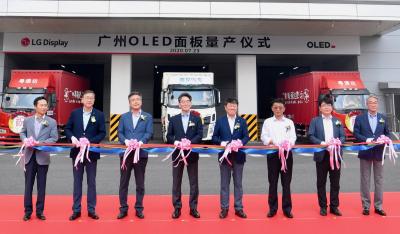LG Display's original plan was to start producing OLED TV panels at its 8.5-Gen OLED fab in Guangzhou in October 2019, but following some technical issues, production was pushed back, several times.

Yesterday LGD announced that it has finally started mass production of its Guangzhou fab. The capacity of the Guangzhou fab is 60,000 substrates per month, which will almost double LGD's total OLED TV capacity to 130,000 substrates per month.LGD also plans to expand the Guangzhou fab to 90,000 monthly substrates in the future. The plant will be used to produce 48-inch, 55-inch, 65-inch, and 77-inch panels, and 48-inch OLED TVs will shortly start to ship.
In total, LGD is now able to produce over 10 million 55" OLED TV panels per year.
LGD's original plan was to ship over 6 million OLED TV panels in 2020 - which include the smaller 48" OLED TV panels launched at CES 2020. It seems highly likely that LGD will not be able to meet its goals. In its latest note, DSCC sees 4.5 million OLED TV panels being produced in 2020, while Omdia's forecast is for only 3.5 million TVs. With the latest delays in Guangzhou, it will be good if LGD will be able to meet these lower targets.
The new Gaungzhou fab is similar to LG's current Paju OLED TV fab, and LGD originally believed it will ramp up very quickly. But the company also decided to adopt several new technologies in this new fab - ironically mostly to improve productivity (including MMG, which seems to be the most challenging technology and the main cause of the low yields) and these hasn't been stabilized in time. In addition LGD opted to use a new OLED stack (to improve efficiency and productivity at the same time) and also for new equipment produced in China (rather than the Korean equipment in uses in Paju). All of this contributed to the delays, and the COVID-19 pandemic did not help of course.
LG's Goungzhou fab was announced in 2017, but the company found it challenging to get approval from both the Chinese and Korean government - which it finally got in July 2018. The total investment in the new fab was about $4.2 billion. The new fab was established in a joint venture established between LG Display and Guangzhou Development District (GDD). LG Display holds a 70 percent stake in the JV.
LGD hopes that the Goungzhou fab will enable it to cut production costs due to lower wages, government subsidies and the new technologies used . DSCC estimates that the subsidies will reduce LGD's depreciation costs by 65%.


